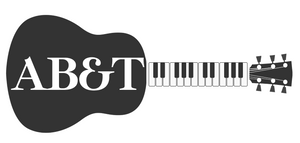How to Adjust Backing Tracks to Fit Your Vocal Range
Introduction
As a singer, using backing tracks that complement your vocal range is essential for delivering a strong performance. Whether you're preparing for a gig, audition, or paid event, adjusting the key and tempo of your backing track ensures that you sing comfortably and confidently. This guide explores various techniques and tools to modify backing tracks and how these adjustments can help boost your career as a performer.
Why Adjusting Backing Tracks Matters

Performing songs in their original key may not always suit your vocal range. Singing in an uncomfortable range can strain your voice, affect pitch accuracy, and reduce the emotional impact of your performance. Adjusting the key and tempo allows you to:
-
Sing comfortably without straining your voice
-
Deliver a more polished and confident performance
-
Maintain vocal health and longevity
-
Cater to different audiences and event styles
-
Increase opportunities for paid gigs by expanding your repertoire
Methods for Modifying Backing Tracks
1. Changing the Key
Changing the key of a backing track ensures that the song aligns with your vocal range. Here’s how you can do it:
Using Digital Audio Workstations (DAWs)
Software like Ableton Live, Logic Pro, or GarageBand allows you to transpose a track up or down without significantly affecting audio quality.
-
Import the backing track into the DAW
-
Use the pitch shift or transpose function to raise or lower the key
-
Adjust the formant settings to avoid unnatural sound artefacts
Online Key-Changing Tools
For quick adjustments, online tools like:
-
Pitch Changer (www.audiotrimmer.com)
-
Transpose.io allow you to upload tracks and modify the pitch without installing software.
Custom Backing Track
For an authentic sound, the best option is to have a custom backing track created in your chosen key. Why this matters...When you use a program to change the key, what you're doing is both changing the pitch but also the overall tone of the sound. The larger the change in pitch, the more your track will start to warp, distort and not sound real. By changing the key, a live musician would naturally change the voicings played on an instrument like a guitar or piano. Without these true voicings in place, the recording will not quite sound right and this subtle difference can have a profound affect on your performance and how it is perceived.
2. Adjusting the Tempo
Altering the tempo of a track can help if a song feels too fast or too slow for your style.
Related Products
Using DAWs
Most DAWs allow time-stretching without changing the pitch:
-
Import the track into your DAW
-
Use the "Time Warp" or "Stretch" function to adjust the speed
-
Ensure that the tempo change doesn’t distort the audio quality
Online Tempo Changers
Sites like:
-
TimeStretch (www.audiotoolset.com)
-
Online Audio Speed Changer (www.mp3cut.net/change-speed)
-
Audacity (free software with tempo adjustment options)
- Uptempo (www.stonekick.com/uptempo.html)
allow you to slow down or speed up a song while maintaining its key.
How This Helps You Generate More Paid Work

1. Expanding Your Repertoire
By adjusting backing tracks, you can perform a broader range of songs that suit your voice, increasing your marketability.
2. Customising Set lists for Events
Being able to modify songs means you can cater to specific event themes, whether it’s a wedding, corporate event, or a private party.
3. Improving Vocal Endurance
Performing in a comfortable range reduces vocal fatigue, allowing you to take on more gigs without damaging your voice.
4. Enhancing Audience Engagement
A well-executed performance resonates more with audiences, leading to repeat bookings and referrals.
5. Offering Personalised Services
Clients may request custom song keys to match a duet partner or a special dedication. Being able to adjust tracks adds value to your services.
Sing in Your Key
Adjusting backing tracks to fit your vocal range is a game-changer for singers. Using the right tools and techniques to modify key and tempo enhances your performance, protects your voice, and increases your opportunities for more paid work. Mastering these skills will set you apart as a professional, adaptable, and in-demand performer.
At Acoustic Backs And Tracks we offer a first class, speedy custom service that will provide you with a backing track in any key you'd like. You get a professional quality backing track in a key that suits your voice without having to compromise on sound quality. Check out our industry leading custom backing track service to see if we can help you perform to your absolute best on every occasion.




















